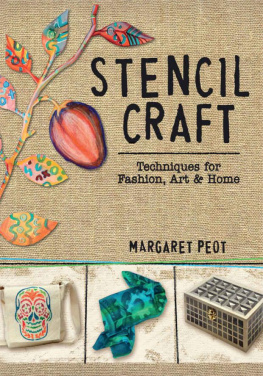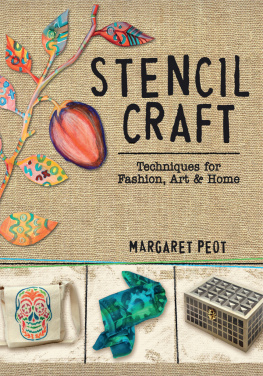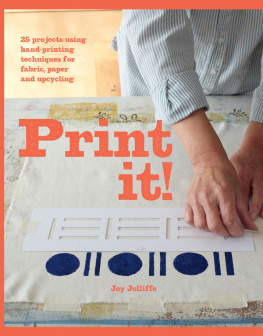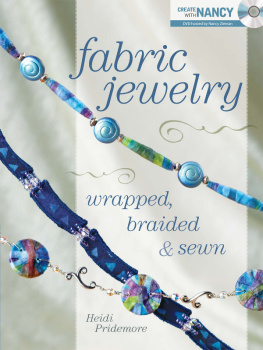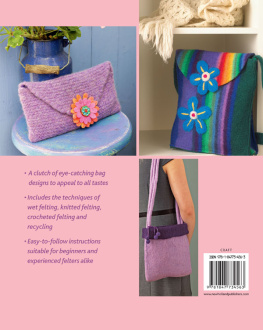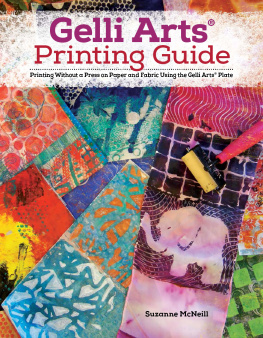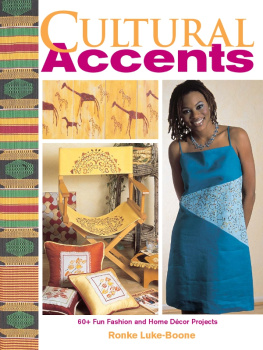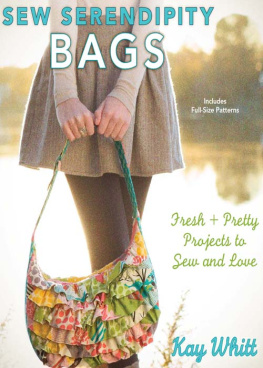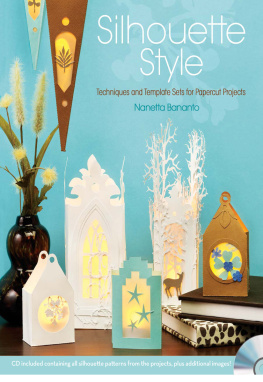Techniques for Fashion. Art & Home
Thank you for purchasing this Artist Network eBook.
Sign up for our newsletter and receive special offers, access to free content, and information on the latest new releases and must-have art resources! Plus, receive a coupon code to use on your first purchase from NorthLightShop.com for signing up.
or visit us online to sign up at
http://artistsnetwork.com/ebook-promo
Contents
What You Need
Stencil Materials
- clear acetate or frosted or matte Mylar
- found stencil objects such as lace, flowers, twigs, etc.
Brushes
- 12" and 1" brights
- 1" chip brush
- 3" foam brush
- stencil brush
Paints and Inks
- Colorbox Fluid Chalk Petal Point pastel ink pad
- Derwent Inktense Color Blocks
- latex paint (flat white)
- liquid or low-viscosity acrylic paints
- Sharpie markers (thick, fine and extra fine)
Fabrics
- burlap tote bag
- canvas apron
- canvas messenger bag
- fabric pieces
- pillow covers
- tablecloth
Paper
- brown craft paper
- card stock
- computer paper
- medium-weight drawing paper
- stationery paper
- tracing paper
Other
- bone folder
- craft knife
- discharge paste
- foil glue
- foil sheet
- glass panel
- iron
- latex gloves
- masking tape
- Mod Podge Gloss
- natural sponge
- pencils
- Preval sprayer and container
- reference photos
- scissors
- self-healing cutting mat
- Spray Mount
- stencil cutter
- stencil burner
- stencils
- Varathane spray
- waxed paper
- wooden box
Introduction
Thousands of years ago deep in a dark cave, a human being put his or her hand on a cave wall and blew paint made with charcoal or mineral powder around itthe first stencil. What was left was the impression of a light hand on the wall surrounded by a vigorous spray of color illuminated by torchlight. The mark looks very immediatewe can almost hear the painters breath blowing air through a reed to spatter the pigment and water, perhaps just a little further down the tunnel passage.
We dont know why this long-ago artist made a hand stencil. We dont know if it had religious significance or even who made it, whether a man or a woman. We dont know if the makers of the hand stencils were tribal artists who were accorded esteem for their skills, or if they were following the directions of others. We only know that these ancient hand prints exist and that they fill us with curiosity.
All human beings are artists. We all have ideas and pictures in our mind that move and inspire us and we all want to leave our mark on our world. In this book you will make your mark on your world literallyusing stencil techniques to paint on clothes, paper and home furnishings for fashion, interior design, art and crafting.
While experimenting with the projects in this book, you will make some beautiful things and some ugly things, You will grow both inspired and frustrated. You will ruin something and throw it away, or a fabulous Phoenix will rise from the ashes, and you will surprise yourself by painting something more fabulous than you ever expected. Just be loose and be flexible so you can respond fluidly to what is in front of you.
Lets get started!
LASCAUX
Watercolor and ink on Rives BFK paper 22" 30" (56cm 76cm)
01
Stencil Basics
A stencil is anything you place on a surface to block paint. You can use stencils to paint specific images, to make textures or to add color. Stencils can be made of almost anything, from carefully cut Mylar to torn brown paper, from masking tape to dried weeds and grasses.
If you tape stripes on a wall and paint the wall, the tape is the stencil. If you hold an oak leaf on a piece of paper and brush paint off the edge of it, the oak leaf is the stencil. If you spray paint onto a surface across a feather or rumpled lace, it can make an almost photographically detailed image. If you scatter a handful of coins across a piece of white fabric and spray aqua fabric paint across them, the coins block the sprayed paint from the fabric and the result is a cheerful dotted fabric that you can make into a summer skirt, or napkins for a picnic.
There are two reasons to use cut stencils, and sometimes they overlap. The main reason to use cut stencils is that you want to print one image more than onceseveral T-shirts with the same design, an edition of art prints or perhaps signage for a party. The second reason is that you want the particular look that a stencil gives: bold and crisp. In order to function and to be effective, the stencil has to be hyper-designed; highlights and shadows become abstract shapes, lines have changeable weight. Delicate marks are not as easy to get with a stencil. A stencil generally makes marks with a strong appearance and precise edges.
The magic of stencils is that they can be used and re-used for a multitude of projects. The same stencil can be used to print a T-shirt, a greeting card, place mats, a tote or can even be worked into a stencil collage.
Acetate and Mylar stencils for printing creatures, paw prints, textures and decorative borders
Stencil Supplies
A wide variety of plastic, acetate and Mylar can be used for cutting stencils. Some have a low to medium tack adhesive to prevent the stencil from moving around while you are painting. This tack is especially useful for painting on an upright surface such as a wall and for use in airbrushing as the projected paint from an airbrush can puff up the edge of the stencil and cause overspray.
If you cut a stencil from a material that does not have built-in tack, you can use Spray Mount, a repositionable adhesive made by Scotch. It is different than other spray adhesives as it is not permanent but gives a light tack that is perfect for stencils that you intend to use again and again. When you are storing stencils that have been sprayed with Spray Mount, put waxed paper in between the sticky stencils so they wont stick to each other.
When using Spray Mount, follow the manufacturers safety directions. Because it is flammable, you must not use it around any open flame such as a fireplace or pilot light. Use Spray Mount only in a well-ventilated space. Use a respirator with the proper cartridges as well.
You do not have to use Spray Mount, however. I didnt for years. If I had a particularly floppy or unwieldy stencil, I rolled up little pieces of tape and stuck them under some edges. That was good enough. But Spray Mount is a wonderful tool that we use often when painting costumes and working with very large and complicated stencils.

